How to solve the 2x2x2 Pocket Cube
Also called the Mini Cube the Pocket Cube is a relatively tough puzzle, though if you can solve the Rubik's Cube it is easy when pictured as simply having to solve the corners of the larger 3x3x3 cube. There are 3,674,160 permutations of this cube which was also invented by Erno Rubik himself.
Notation
The notation used for the Pocket Cube is very similar to that of the Rubik's Cube - and all other cubes or cuboids in fact. For the pocket cube it is simpler, there are no edge or centre pieces since every piece is a corner.

F = Front

B = Back

U = Up

D = Down

R = Right

L = Left
Moves should be performed with the front face pointing towards you. F means turn the front face a quarter turn clockwise. F' means turn the front face a quarter turn clockwise, F2 means turn the front face a half turn. B means turn the back face a quarter turn clockwise as if you were looking directly at it etc.The front face will always be the one looking out of the screen throughout the tutorial, and any grey squares mean that the colour does not matter.
Layer 1
Step 1
Solving the Pocket Cube is akin to solving a Rubik's Cube with no edges or centre pieces. In fact, the beginner's method uses exactly the same algorithms as are used on the larger Rubik's Cube. If you can solve the Rubik's Cube, this should be relatively easy.
First, pick the side you want to solve as your first layer, here we will solve the white layer first, and in particular pick a cube that belongs to that side as your reference point.
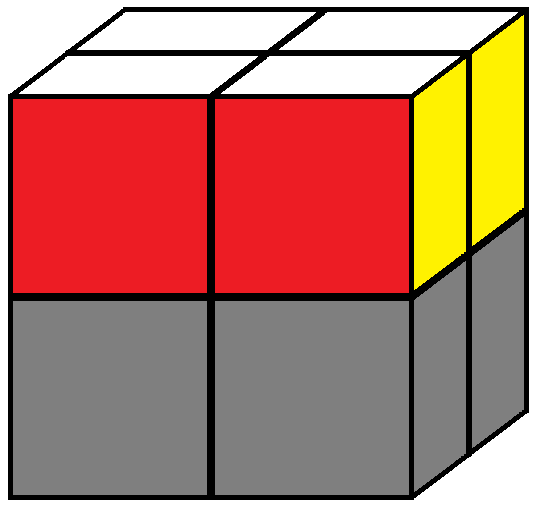
Aim
Find your next challenge
Soving the first layer of the pocket cube is identical to solving the corners on a 3x3x3 Rubik's cube. Simply find the corner you want to move next to your reference pice, checking that the adjacent edges match, place it underneath where it needs to go and then perform the following algorithm (it may need to be performed multiple times):
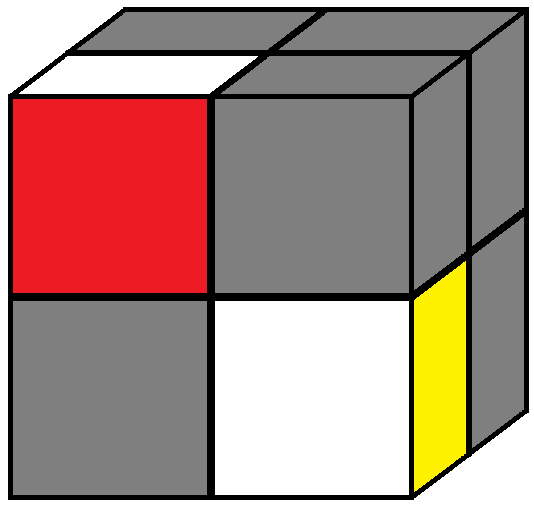

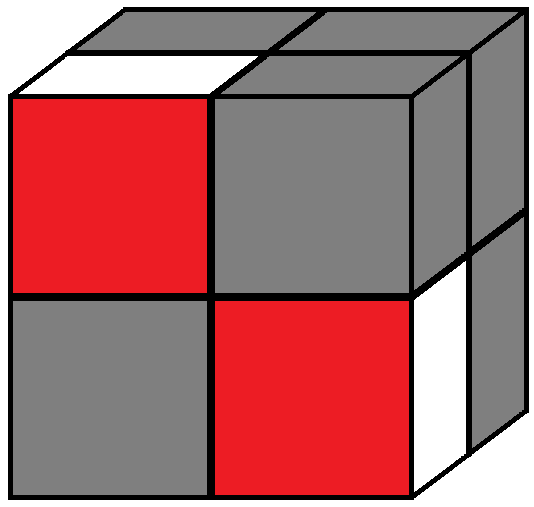
Algorithm: R' D' R D
Layer 2
Step 2
For the final layer the pieces need to first be orienated correctly
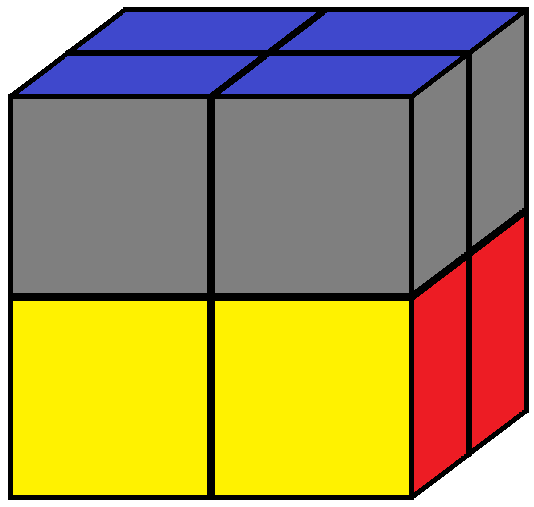
Aim
First, get the cube into one of the following positions. This can be done by performing the below algorithm. Once you have done this, position the cube as shown and perform the same algorithm, this may take several repetitions. After each repetition ensure you orientate the cube correctly before reapplying the algorithm.
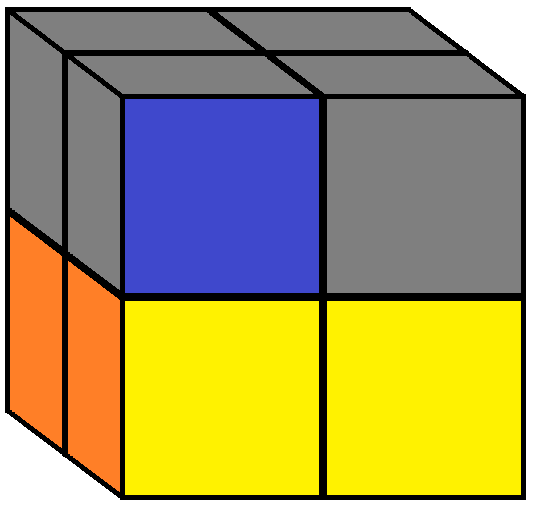
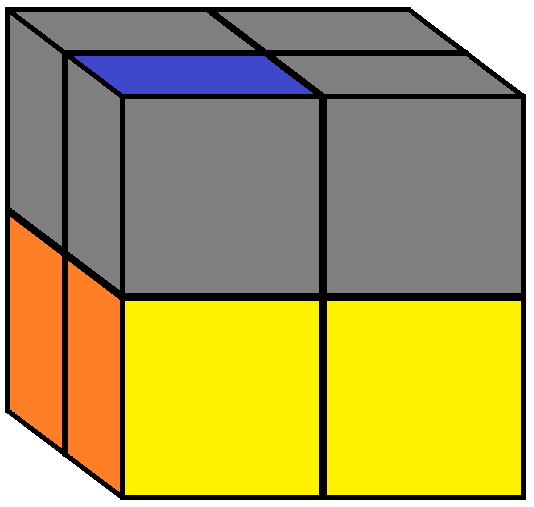
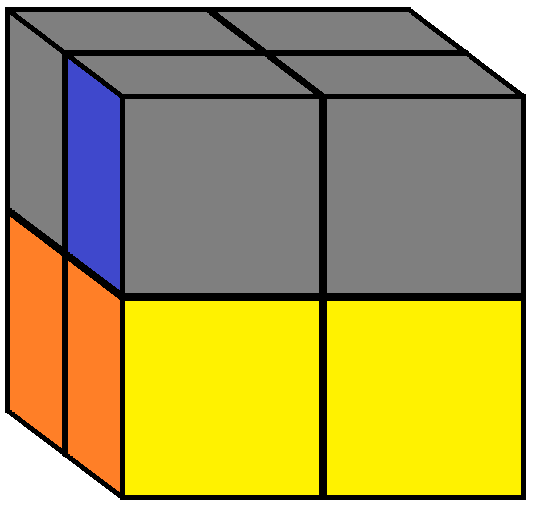
Algorithm: R U R' U R U2 R'
Step 3
Finally, the corner pieces need to be permuted into their correct position.
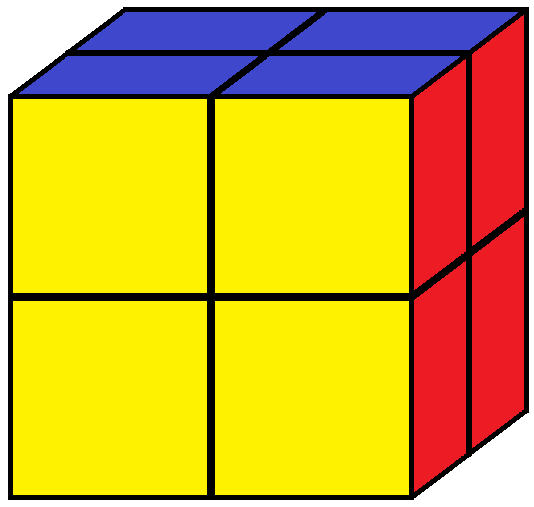
Aim
Twist the final layer until two corners are in their correct position, two of them have to be in their correct place. Place these two correct corner pieces at the back (where the x's are in the diagram). If your correct two corners are diagonally opposite eachother then perform the below algorithm once - this will give you two correct corner pieces next to each other which you can then place in the back and solve.

Algorithm: R' F R' B2 R F' R' B2 R2 U'